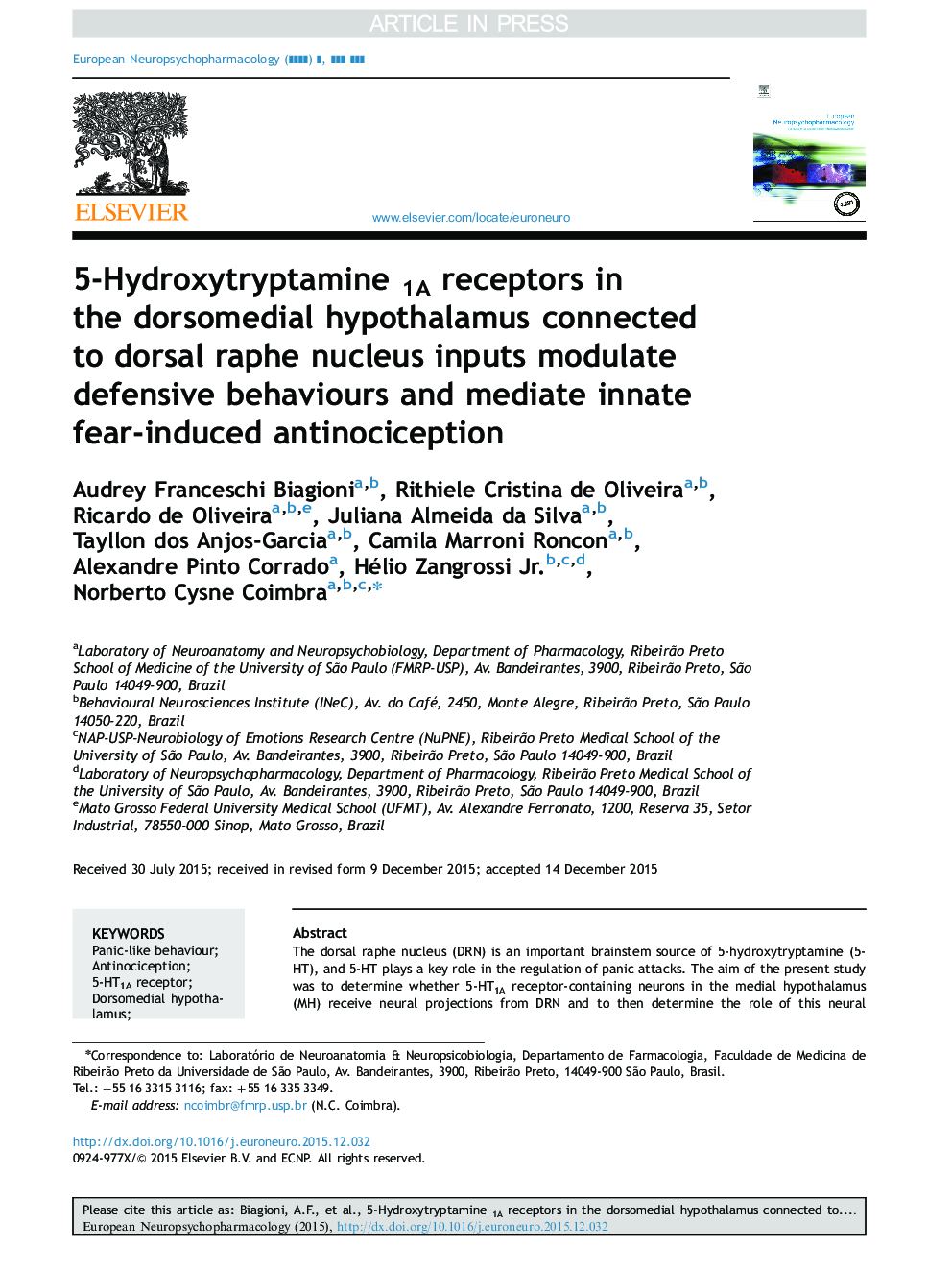| کد مقاله | کد نشریه | سال انتشار | مقاله انگلیسی | نسخه تمام متن |
|---|---|---|---|---|
| 10298599 | 539494 | 2016 | 14 صفحه PDF | دانلود رایگان |
عنوان انگلیسی مقاله ISI
5-Hydroxytryptamine 1A receptors in the dorsomedial hypothalamus connected to dorsal raphe nucleus inputs modulate defensive behaviours and mediate innate fear-induced antinociception
دانلود مقاله + سفارش ترجمه
دانلود مقاله ISI انگلیسی
رایگان برای ایرانیان
کلمات کلیدی
موضوعات مرتبط
علوم زیستی و بیوفناوری
علم عصب شناسی
روانپزشکی بیولوژیکی
پیش نمایش صفحه اول مقاله

چکیده انگلیسی
The dorsal raphe nucleus (DRN) is an important brainstem source of 5-hydroxytryptamine (5-HT), and 5-HT plays a key role in the regulation of panic attacks. The aim of the present study was to determine whether 5-HT1A receptor-containing neurons in the medial hypothalamus (MH) receive neural projections from DRN and to then determine the role of this neural substrate in defensive responses. The neurotracer biotinylated dextran amine (BDA) was iontophoretically microinjected into the DRN, and immunohistochemical approaches were then used to identify 5HT1A receptor-labelled neurons in the MH. Moreover, the effects of pre-treatment of the dorsomedial hypothalamus (DMH) with 8-OH-DPAT and WAY-100635, a 5-HT1A receptor agonist and antagonist, respectively, followed by local microinjections of bicuculline, a GABAA receptor antagonist, were investigated. We found that there are many projections from the DRN to the perifornical lateral hypothalamus (PeFLH) but also to DMH and ventromedial (VMH) nuclei, reaching 5HT1A receptor-labelled perikarya. DMH GABAA receptor blockade elicited defensive responses that were followed by antinociception. DMH treatment with 8-OH-DPAT decreased escape responses, which strongly suggests that the 5-HT1A receptor modulates the defensive responses. However, DMH treatment with WAY-100635 failed to alter bicuculline-induced defensive responses, suggesting that 5-HT exerts a phasic influence on 5-HT1A DMH neurons. The activation of the inhibitory 5-HT1A receptor had no effect on antinociception. However, blockade of the 5-HT1A receptor decreased fear-induced antinociception. The present data suggest that the ascending pathways from the DRN to the DMH modulate panic-like defensive behaviours and mediate antinociceptive phenomenon by recruiting 5-HT1A receptor in the MH.
ناشر
Database: Elsevier - ScienceDirect (ساینس دایرکت)
Journal: European Neuropsychopharmacology - Volume 26, Issue 3, March 2016, Pages 532-545
Journal: European Neuropsychopharmacology - Volume 26, Issue 3, March 2016, Pages 532-545
نویسندگان
Audrey Franceschi Biagioni, Rithiele Cristina de Oliveira, Ricardo de Oliveira, Juliana Almeida da Silva, Tayllon dos Anjos-Garcia, Camila Marroni Roncon, Alexandre Pinto Corrado, Hélio Jr., Norberto Cysne Coimbra,